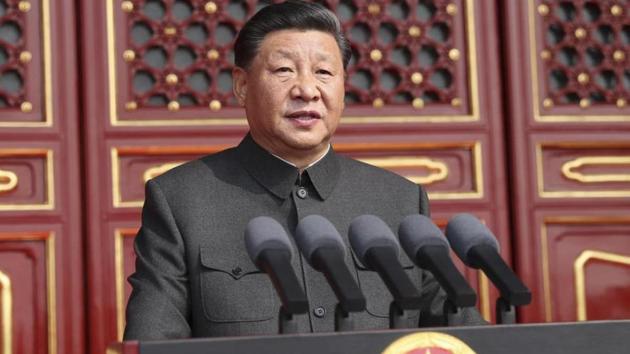Ladakh was the starting point. India-China ties are getting complicated
India-China border: The Ladakh LAC stand-off may get sorted out over time but the Chinese posture towards India will not change
Eight months to this date, the People’s Liberation Army (PLA) launched aggression on Indian Army troopers at the finger four mountainous spur on the north banks of Pangong Tso and tried to unilaterally change the alignment of the 1,597-kilometre Line of Actual Control (LAC) in Ladakh. It was premeditated. The soldiers had exchanged blows, threw stones at each other and attacked Indian soldiers with nail-studded clubs. But the PLA aggressors had been ready, wearing helmets and thickly-padded anti-riot uniforms.

Also Read: Restore vandalised temple in two weeks: Pak SC tells KP’s provincial govt
The PLA then expanded the aggression horizontally, creating friction points at Galwan Valley and Gogra-Hot Springs near Kongka La. The conflict flared up on June 15 at Patrolling Point 14 in Galwan Valley but the Indian Army led by Col Santosh Babu responded in kind to Chinese aggression. Patrolling point 14 is among the 65 patrolling points identified back in 1976 as the patrolling limits for the Indian troopers on the Ladakh LAC.
On August 29-30, the Indian Army pre-empted a PLA military manoeuvre on the south banks of Pangong Tso and occupied the heights on the Rezang La-Rechin La ridgeline, which dominate the Chinese Moldo garrison in Chushul sector. The PLA tried to retaliate but the Indian Army was able to convey its seriousness by a counter move.
Also Read: 10 Chinese spies caught in Kabul get a quiet pardon, fly home in chartered aircraft
Eight months down the line with both Indian Army and the PLA locked up in a military stand-off and eight rounds of military talks at the senior commander level completed, the negotiations between the two sides are still work in progress.
“While the dates for the ninth round of military talks are still to be decided, we are in no hurry as the Chinese side is yet to get back with certain clarifications towards disengagement and de-escalation on ground. We are prepared for a long haul but the ultimate objective is to get the heavy armour of both armies back to bases,” said a senior official.
While both armies are working out various permutations and combinations to disengage from the north banks of Pangong Tso, Hindustan Times has learnt that the solution, if and when it comes to fruition, will answer the concerns of both sides and lead to a rollback of the PLA’s May 2020 aggression.
The change of XIV Corps Commander and the PLA’s western theatre commander could also work towards the resolution of the stand-off as the previous PLA commander General Zhao Zongqi had been aggressive on both the Indian and the Bhutan border during his tenure. While there is a military status quo along the Indian LAC, there has been no let up in the PLA push towards Bhutan with the Chinese army building infrastructure on both sides of the Amu Chu (river) that could threaten the Indian Siliguri corridor. The Sikkim-Bhutan sector is a matter of top Indian security concern with Bhutan largely having a ceremonial army and hardly any ability to stand a PLA onslaught.
Also Read: Chinese economy is recovering. But there are gaps | Analysis
While the Ladakh LAC stand-off may get sorted out over time, the Chinese posture towards India will not change as it believes that the Modi government has synergised with the US over Indo-Pacific and QUAD - the informal grouping that brings together India, Australia and Japan with the United State - and thus become an adversary.
What Beijing papers over is that the Indian posture towards China is a reaction to Middle-Kingdom’s encirclement of India through its tributary states in South Asia and South-East Asia.
”If China has issues with India over its proximity to the US, Japan and Australia, then India also has very serious concerns over Beijing’s role in Gilgit-Baltistan, Balochistan and Sindh. Had India played the puppeteer in Nepal or Sri Lanka like China does, then it would have been called a hegemon. So the two rising powers need to find balance or else there will be friction,” said a government security expert.
Get Current Updates on India News, Lok Sabha Election 2024 live, Infosys Q4 Results Live, Elections 2024, Election 2024 Date along with Latest News and Top Headlines from India and around the world.




